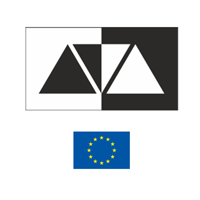Speaker
Description
In order to observe molecular reactions at the ambient temperatures of the interstellar medium, the Cryogenic Storage Ring (CSR) was built at the Max Planck Institute for Nuclear Physics. This low-energy electrostatic storage ring is designed for molecular ions up to 300 keV per charge unit, independently of ion mass. With internal wall temperatures of 6 K, CSR allows infrared active molecular ions to radiatively cool toward their rovibrational ground state and to perform molecular collision experiments under these conditions.
In CSR, two types of cryogenic detectors for collisional products are available. On the one hand, movable counting detectors can identify particles by their mass/charge ratio. On the other hand, a multi-coincidence imaging detector is used for detection of neutral reaction products resolved in space and time, providing 3D information about reaction kinematics. Moreover, a technically challenging, low-energy (1 eV - 1000 eV) electron cooler was recently implemented in CSR that allows to perform electron-ion merged beam experiments in a cryogenic environment. Here we report on its electron cooling capabilities as well as on diagnostic tools for observing and optimizing electron cooling in a low-energy storage ring.
